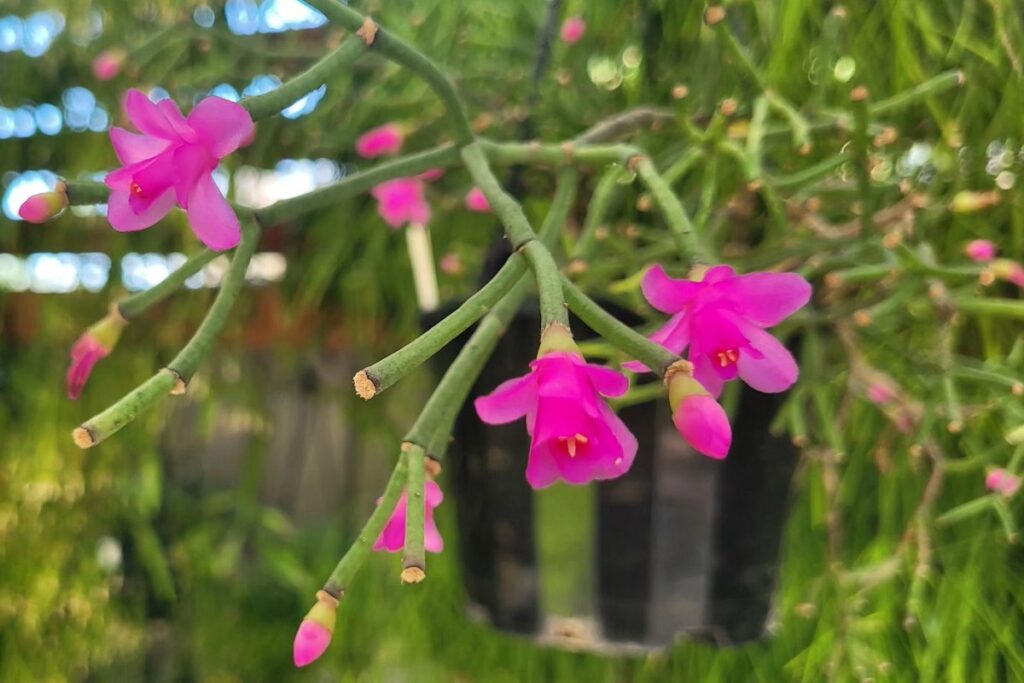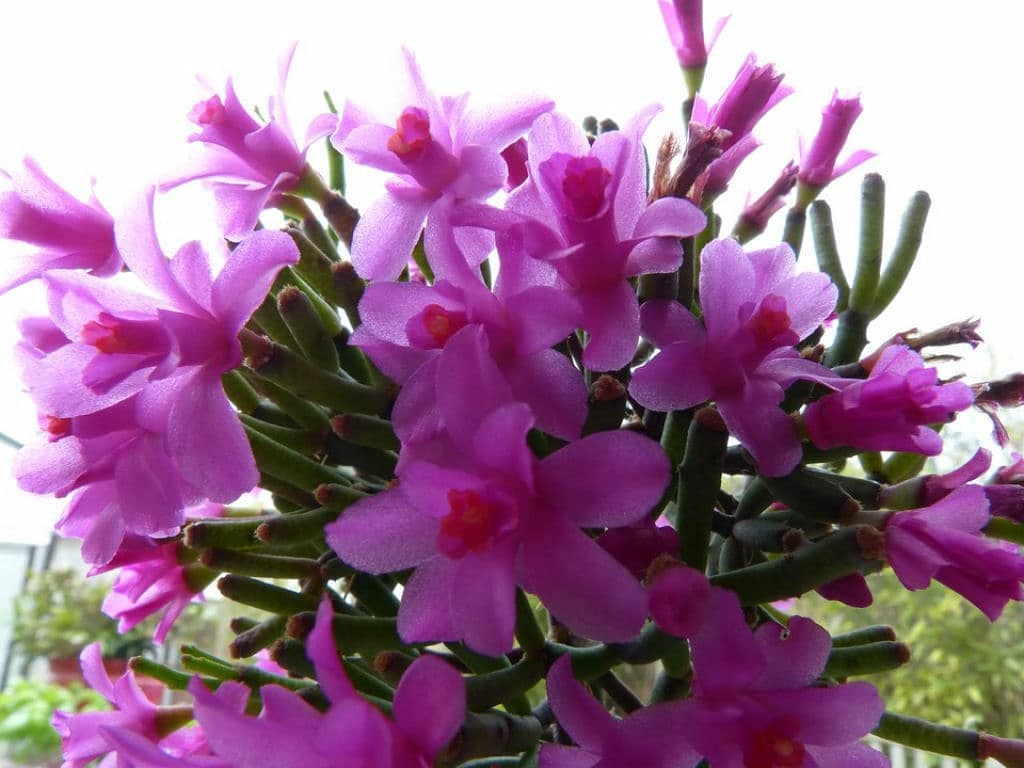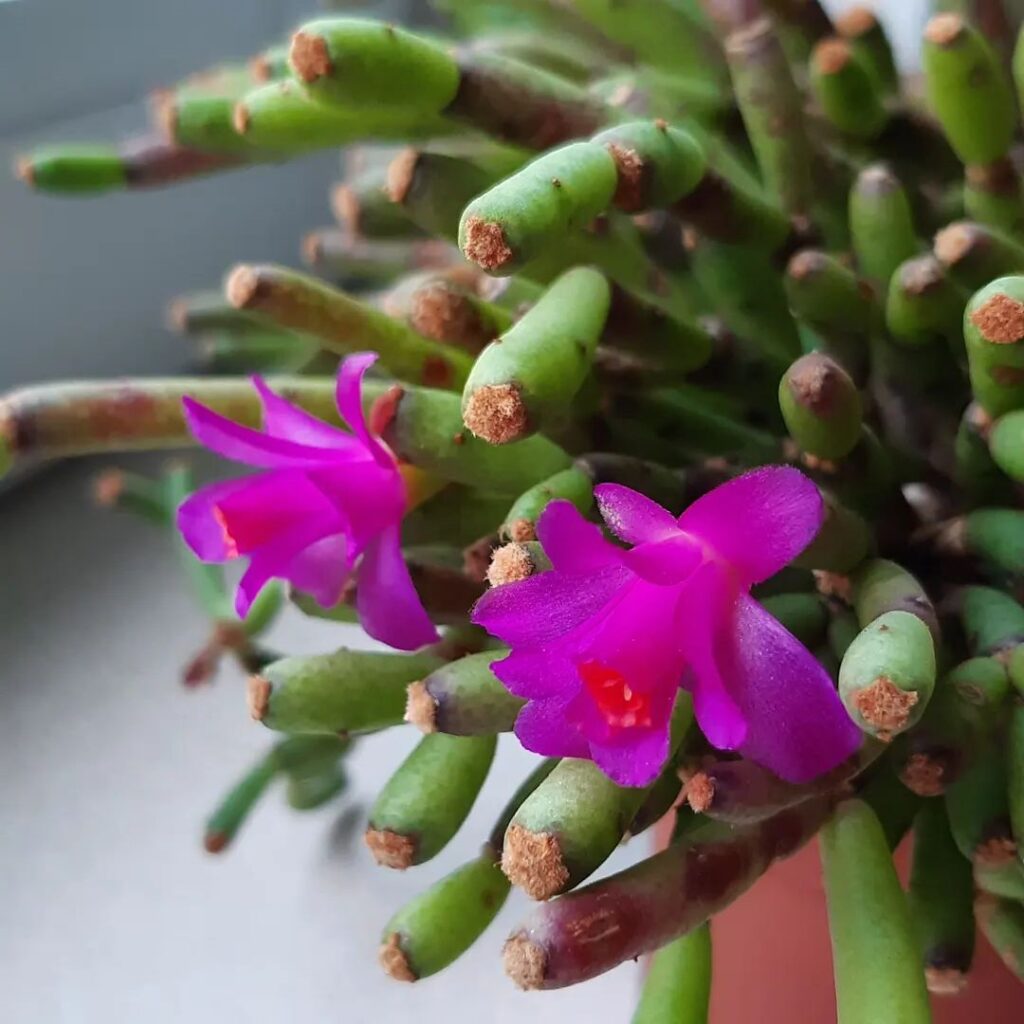Hatiora herminiae: The Rare Cactus That Looks Like Alien Tentacles
The Hatiora herminiae is a fascinating rare cactus that immediately catches the eye with its unusual growth habit. Instead of typical cactus stems, it has thick, fleshy segments that branch out in a very distinct, tentacle-like pattern.
If you’re looking for an interesting and out-of-the-ordinary houseplant, this Brazilian native is definitely worth considering. Read on to learn more about this quirky succulent.

Contents
About Hatiora herminiae
Hatiora herminiae is a small, epiphytic shrub that grows upright or arching to about 1 foot tall when mature. Its stems are segmented into slender, cylindrical pieces covered in a velvety gray felt.
The segments fork out in a dichotomous or whorled pattern, giving the plant its very distinctive branching structure. The lower stems turn brown with age, while the upper segments are a matte gray-green, olive green, or take on purplish tones in bright light.
In the spring, this unusual cactus produces small but vibrant rose pink, pinkish-magenta, or blue-violet flowers up to 2 inches long. The solitary blooms emerge from the felty tips of the stems.
Native to the cloud forests of southeastern Brazil, Hatiora herminiae naturally grows as an epiphyte on tree trunks and branches. It was named after Professor Herminia Castellanos, the wife of an Argentinian botanist.
Related Post:
16 Rhipsalis Types (With Pictures)
How To Care For Hatiora herminiae
Light
Hatiora herminiae prefers bright, indirect light away from intense afternoon sun. A partially shaded spot like an east or north-facing window is ideal.
You can also use a grow light if you don’t have enough natural light. Place the light 6-12 inches from the plant for 12-16 hours per day.
Water
Proper watering is crucial for Hatiora herminiae’s health. Allow the soil to dry out almost completely between waterings during the growing season, then water thoroughly. In winter, water very sparingly, just enough to keep the soil slightly moist. Use only filtered or rainwater, as this cactus is sensitive to mineral salts.
Soil
Hatiora herminiae needs a very loose, well-draining soil mix designed for epiphytes and orchids. A cactus/succulent potting mix amended with ingredients like orchid bark, perlite or pumice works well. Avoid using regular potting soil.

Fertilizer
Fertilize every 2 weeks in spring and summer with a balanced cactus fertilizer diluted to half strength. Stop fertilizing in fall and winter when growth slows.
Temperature and Humidity
Hatiora herminiae enjoys average household temperatures between 65-80°F year-round. It appreciates higher humidity levels around 50-60%, which can be achieved by using a pebble tray or humidifier.
Pests and Problems
The main pest issue is mealybugs, which appear as white cottony masses. Isolate and treat affected plants immediately with an insecticidal soap or neem oil spray.
Rot is a risk if the soil stays too wet. Ensure the pot has drainage holes and be careful not to overwater.
Pruning
Pruning isn’t required, but you can snip off any unsightly or dead segments as needed. Use clean, sharp pruners or scissors.

Potting and Repotting
Repot Hatiora herminiae every 2-3 years in late spring. Choose a container only 1-2 inches wider than the current pot to avoid excess soil moisture.
Hatiora herminiae Propagation
One of the easiest ways to propagate Hatiora herminiae is from stem cuttings:
- Take 3-5 inch cuttings in spring or early summer
- Allow cut ends to dry and callus over for a few days
- Stick cuttings into an appropriate fast-draining cacti/epiphyte soil mix
- Water sparingly until roots form in 4-8 weeks
- Then care for new plants as normal
You can also try growing Hatiora herminiae from seed, though it is more difficult. Viable seeds can be harvested from the ripe olive green fruits.
